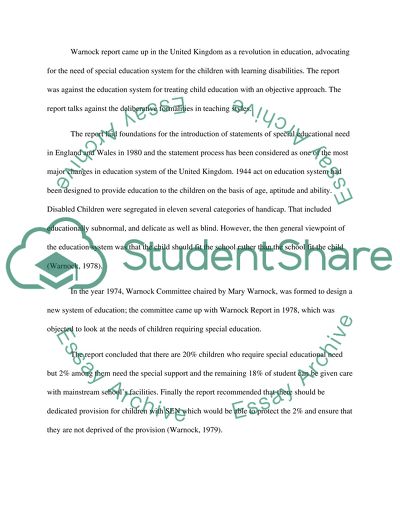Cite this document
(“Special education needs in Warnock Report Essay”, n.d.)
Retrieved from https://studentshare.org/environmental-studies/1417733-special-education-needs-in-warnock-report
Retrieved from https://studentshare.org/environmental-studies/1417733-special-education-needs-in-warnock-report
(Special Education Needs in Warnock Report Essay)
https://studentshare.org/environmental-studies/1417733-special-education-needs-in-warnock-report.
https://studentshare.org/environmental-studies/1417733-special-education-needs-in-warnock-report.
“Special Education Needs in Warnock Report Essay”, n.d. https://studentshare.org/environmental-studies/1417733-special-education-needs-in-warnock-report.


